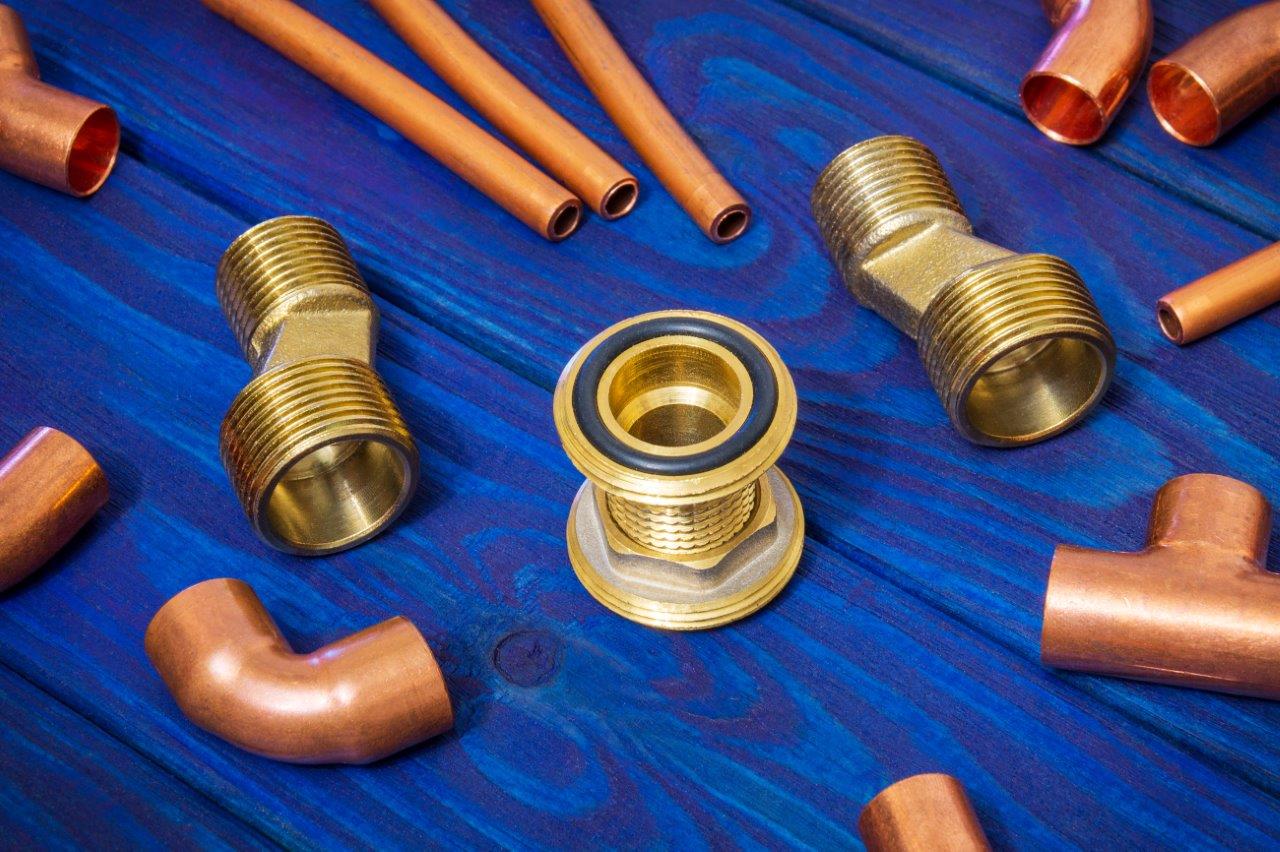What are the Different Applications of Pipe Fittings?

What are the different types of pipe fittings and their uses?
- Elbow pipe fitting
- Cross-type
- Coupling
- Tee fittings
- Plugs
- Bushings
- Reducers
- Flanges
You may or may not understand the first thing about how plumbing systems work — but you may have an idea about some materials used. In particular, we’d like to pay close attention to the different types and applications of pipe fittings that are used in a variety of plumbing applications.
Pipe fittings are components made of different types of materials that are used as a way of connecting two pipes together to help redirect the flow of different kinds of fluids. Read on to find out more about their other functions.
Elbow pipe fitting

Elbow pipe fittings take their name from the shape of the component. They’re mainly connected to different ends of piping work in order to primarily change the direction of the fluid. The compact shape of the fitting itself is what makes it possible to conduct constant pipe rerouting without the inconvenience of using cumbersome materials.
These typically come in different angles — 45, or 90-degree angles to be exact. The uses of each two are only slightly different, in that 90-degree elbow fittings are more commonly utilized as a way of joining valves, water pumps, and hoses together.
Cross-type

Unlike elbow fittings which have only two openings, a cross-type fitting has four different openings, each located in different directions. Depending on the kind of usage, a cross-type may either have three inlets and one outlet or vice-versa.
Arguably, the openings of the most common type of cross fitting are all equal in diameter, but there may be some instances where this isn’t necessarily the case — particularly, for a “reducing cross-type fitting”.
Compared to elbow fittings, cross-types usually need to withstand a greater deal of fluid pressure in different directions. Sometimes, they’re reinforced with other materials to prevent breakage.
Coupling
Though pipe manufacturers see to it that the pipes they produce are durable enough to avoid leaks and damage, this is not a guarantee. There are many options in remediating this kind of problem — one is to replace the pipe itself, or to attach a coupling to the affected area.
Based on the name, coupling fittings are used to join two pipes together, for the purposes of extending the pipe range, or protection against leakage. The two ends of a coupling usually have the same diameter, but there may also be instances wherein the other end is of a smaller diameter to accommodate a change in pipe sizing.
Tee fittings
Similar to cross-type fittings, tee fittings have both inlets and outlets. The main difference is that the latter does not have four openings, but rather three.
The two outlets are perpendicular to a tee fitting’s inlet. This type of fitting is usually for the purposes of merging the flow of fluids that are coming from both outlets. Due to this function, it’s important that the component is also able to hold on its own due to the pressure produced by the flow of the fluid. As such, tee fittings are constructed using a wide variety of materials like stainless steel, cast iron, copper, brass, rubber, and the like.
Plugs
Compared to the previous types of fittings, plugs are not utilized to combine or redirect the flow of fluids. Instead, they’re specifically placed at the end of pipes to cease the flow during a pipe maintenance or repair procedure. Hydraulic systems, gas fittings, and other kinds of coolant systems may make use of plugs.
Depending on the shape of the pipe opening, plugs may also come in hexagonal, square, slotted, or circular sockets to fit the pipe. They usually come in a high corrosion-resistance finish to protect the material and prevent it from being subject to the damages caused by oxidation and weathering.
Bushings

Similar to couplings, joining pipes which come in differing sizes is also the function of bushings. They are compact and do not take up much space, allowing for a convenient and abrupt method of reducing diameter size without virtually many drawbacks.
Bushings may be threaded or not-threaded in their inner and outer spaces, but once again this depends on the pipe’s sealing requirements. Threads give the impression that some pipe fittings bear, for the purposes of assembly.
Reducers
There are two main kinds of reducers, namely concentric and eccentric. Concentric reducers are cone-shaped upon manufacture, and they’re used to produce a decrease in a fitting diameter in an even manner, on the same axis.
Eccentric reducers don’t have a common axis, instead, the smaller outlet has been made to be parallel to a connecting pipe.
Concentric reducers are applied to vertically installed piping work. Eccentric reducer fittings, on the other hand, are used in horizontal applications due to the flat side of the fitting.
Flanges

Flanges, another kind of fitting, are used to combine valves, pumps, and pipes to extend the network and run of the piping installation. These fittings make maintenance and repair much easier because of the structure which allows them to be conveniently detached with tools and equipment such as screwdrivers.
For consistency, flanges are chosen with respect to the kind pipe material. If the pipe is stainless steel, a stainless steel flange is used. The same is true for iron and steel pipes.
Key Takeaway
The many applications of pipe fittings cannot be underestimated because they’re used to maintain the durability of virtually any kind of piping work. They make such functions like flow redirection, combination, or even diameter-alternation.
The guide above presents only some of the most widely used pipe fittings like reducers, elbows, flanges, and coupling fittings. Many other kinds of fittings exist — each having their own distinct uses and appearance.


